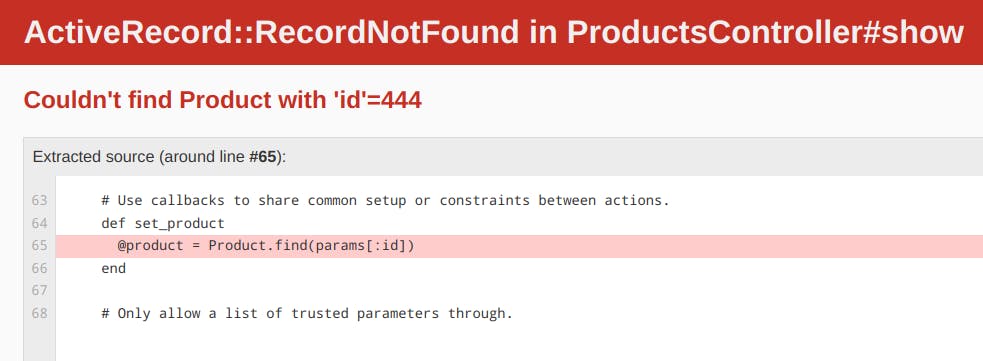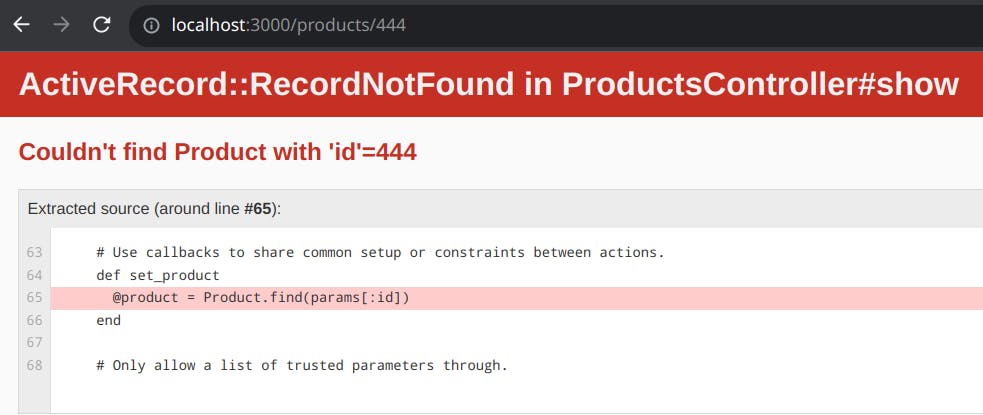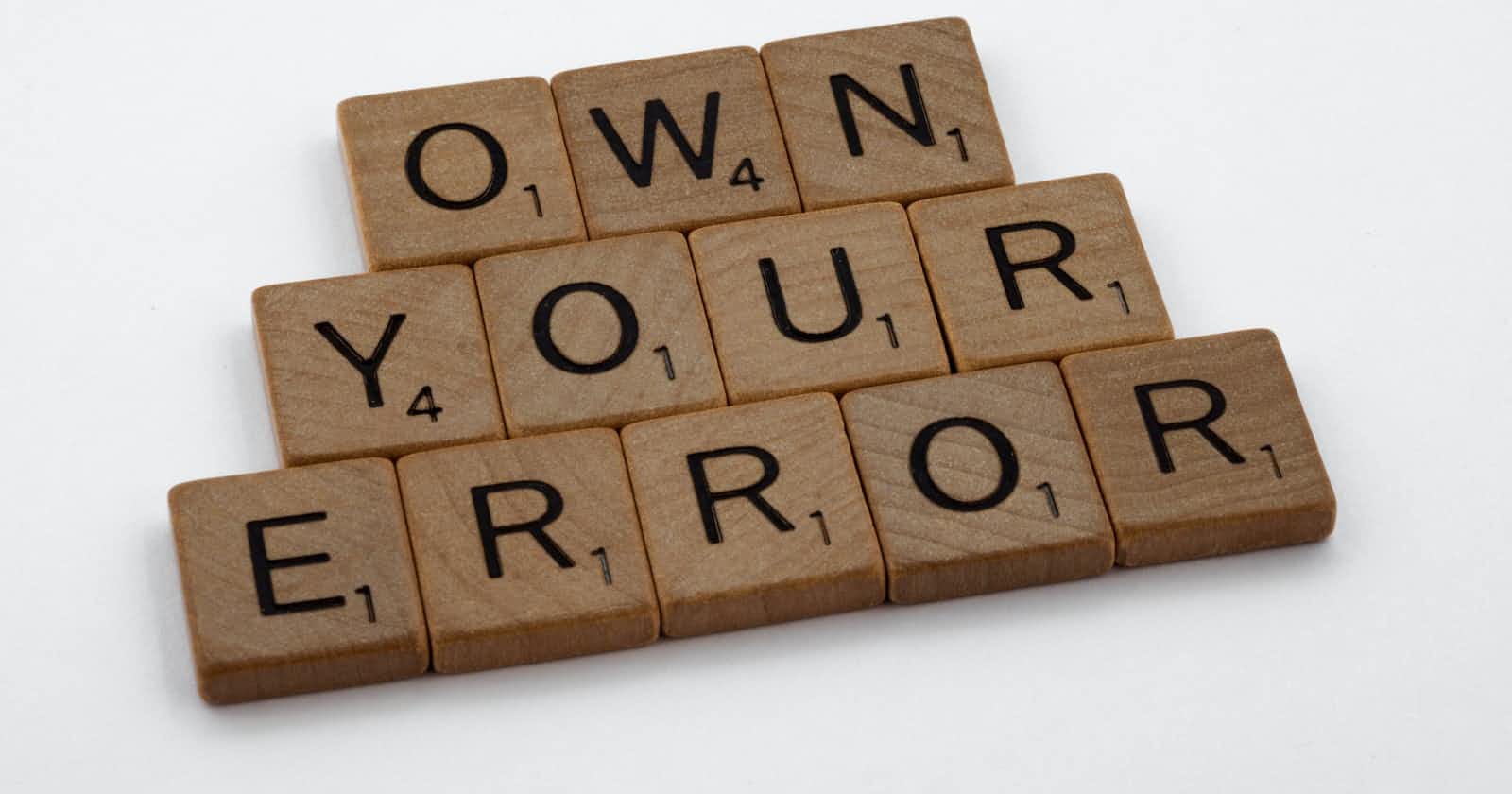TL; DR: The best strategy is the one based on your needs
Problem
The ActiveRecord::RecordNotFound exception in Rails occurs when a specific record is not found in the database.
Rails usually render an error page.
Error
Let's check the exception from different angles.
Full message
ActiveRecord::RecordNotFound in XXXController#action
Snapshot

Explanation
It's important to note that this error typically occurs when trying to find a single record by its unique identifier or a specific set of conditions.
It typically happens when using methods bang methods to retrieve a record based on certain conditions, but the record matching those conditions does not exist.
It is different from a general database query returning an empty result set, as it specifically relates to a missing individual record.
Solutions
1- Show the default error page
Rails way to handle it. In this case, you don't need to provide any additional configuration or code.

2-Use begin and rescue
class PostsController < ApplicationController
def show
begin
@post = Post.find(params[:id])
rescue ActiveRecord::RecordNotFound
flash[:error] = "The requested post could not be found."
redirect_to root_path
end
end
end
By using begin and rescue, you can control how your program handles exceptions, providing error handling and recovery mechanisms to ensure your code behaves as expected even when errors occur.
3- Rescue from method
class PostsController < ApplicationController
rescue_from ActiveRecord::RecordNotFound, with: :handle_record_not_found
def show
@post = Post.find(params[:id])
end
private
def handle_record_not_found
flash[:error] = "The requested post could not be found."
redirect_to root_path
end
end
By using rescue_from you can centralize the handling of specific exceptions in one place within your controller. This approach allows you to keep your code clean and avoid repetitive error handling in multiple actions.
It will be invoked when the ActiveRecord::RecordNotFound exception occurs. Inside this method, you can customize the behavior for handling the exception.
Best error handling strategy
The best approach depends on the specific needs of your application, the complexity of your error handling requirements, and the desired level of consistency in handling ActiveRecord::RecordNotFound errors.
You can choose either method or even a combination of both based on the context and structure of your Rails application.
Anyway, let's point out some details about both:
begin and rescue
In general, if you have specific error handling logic that differs between different actions in a controller, using begin and rescue blocks within each action may be more appropriate.
rescue from
On the other hand, if you want a consistent handling approach for ActiveRecord::RecordNotFound throughout a controller or across multiple controllers, using rescue_from provides a cleaner and more centralized solution.
Conclusion
This error is an essential part of Rails' robust error handling system, providing a clear and informative message to users when a record is not found.
The
ActiveRecord::RecordNotFoundhelps maintain data integrity and ensures that users are aware of the situation and can take appropriate action.
it's important to note that Rails offers various techniques to handle this error, including rescue_from and begin/rescue blocks, allowing developers to tailor their error handling approach based on specific requirements and context.

Let's connect
Final thoughts
I hope this article helped you. Let me know if you have any questions.
Your thoughts, suggestions and corrections are more than welcome.
By the way, feel free to drop your suggestions on new blog articles.
Hope to see you next time.


